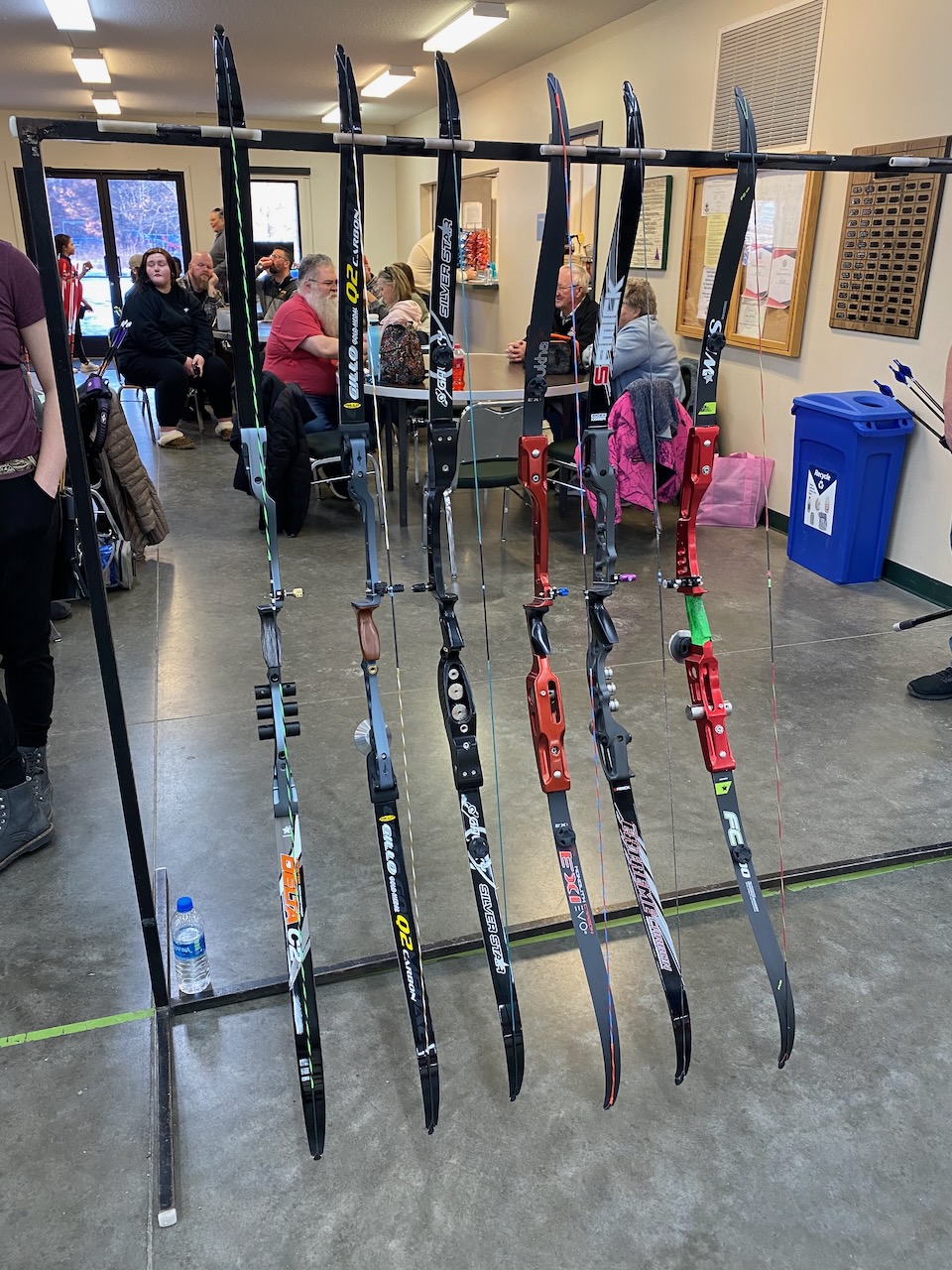- FAQs/
What Equipment Do I Need?
All Rapids Archery JOAD athletes must provide their own equipment. Equipment for USA Archery events falls into five categories: Olympic recurve, compound, fixed pins, barebow, and basic compound. Athletes in these equipment classes will compete against other archers with similar equipment.
Olympic recurve #
If you’ve watched archery in the Olympics, then you’ve seen Olympic recurve bows. They are the only type allowed in Olympic competition. Modern recurve bows have metal risers with a grip and attachment points for accessories, detachable limbs, a string, and various accessories such as a sight, arrow rest, and stabilizers. All recurve archers use their fingers to release the arrow.
Recurve bows are relatively simple mechanically in comparison to compound bows. Since recurve bows are usually disassembled after use, they are also more compact to transport. A basic recurve bow can be purchased for as little as $100, and it’s often possible to upgrade the limbs as the archer gets stronger and more experienced. Former Rapids Archery JOAD coach Rich Cockrell is an expert at setting up and tuning recurve bows, so he’s a great resource to learn more. (He literally wrote the book Modern Recurve Tuning “Start To Finish”.)
If you have Olympic dreams, then a recurve is the bow for you.
Compound #
 Compound bows have cams on each end that produce “let off” when the bow is drawn. They also have a “back wall” or fixed draw length. Recurve bows have neither of those things, so it’s often easier for a beginning archer to find success sooner with a compound bow. Compound bows are also more common in Minnesota because they’re more often used for hunting.
Compound bows have cams on each end that produce “let off” when the bow is drawn. They also have a “back wall” or fixed draw length. Recurve bows have neither of those things, so it’s often easier for a beginning archer to find success sooner with a compound bow. Compound bows are also more common in Minnesota because they’re more often used for hunting.
There are a lot of optional accessories for compound bows, and many archers use front and back stabilizers to help steady their bows and increase accuracy. In addition, the compound equipment class allows movable sights so the archer can make adjustments to their sight at any point during the competition.
Most compound archers use mechanical release aids to release the string and fire the arrow. Trigger-style releases are the most common, but many archers switch to button- or hinge-style release aids as their skills grow. A few compound archers use their fingers to fire the arrow like recurve archers do, but “shooting fingers” greatly reduces accuracy, and archers who do have a hard time competing in the compound class.
Fixed Pins #
USA Archery added a “fixed pins” equipment class in 2022 for JOAD archers that aligns closely with NFAA’s bowhunter freestyle class. This new designation limits front stabilizers to 12″ and requires a sight with no magnification and fixed pins for aiming. Archers competing in this class may not adjust their sights once a scoring round has begun.
Barebow #
 A barebow is a recurve bow without any sights or stabilizers and only a simple arrow rest. Most competition barebows have detachable limbs like the Olympic recurve bows. “Traditional” bows also fall into the barebow category, but traditional bows are not even allowed to have an arrow rest.
A barebow is a recurve bow without any sights or stabilizers and only a simple arrow rest. Most competition barebows have detachable limbs like the Olympic recurve bows. “Traditional” bows also fall into the barebow category, but traditional bows are not even allowed to have an arrow rest.
Some JOAD archers start their archery experience with barebows or traditional bows to learn the proper form. JOAD pins all the way up to Gold Olympian may be earned with barebows, and barebow archers can compete at the highest level in the sport except for the Olympics where it’s recurve only.
Basic Compound #
The Genesis bow that students might be familiar with from the NASP program falls into this category for the purpose of earning pins as long as there is no sight installed or arrow rest beyond the standard Genesis one. For competitions, the basic compound class is offered through age 14. For the Under 18 (cadet) class and beyond, basic compound archers would have to compete in the regular compound class.